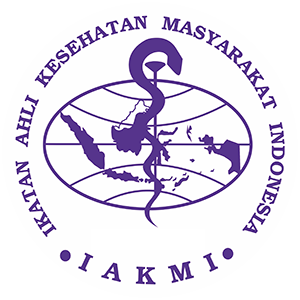The Level of Anxiety of Leprosy Patients in terms of Demographic Characteristics of Respondents
DOI:
https://doi.org/10.30787/gaster.v19i2.603Keywords:
Anxiety, LeprosyAbstract
Leprosy is a chronic contagious disease caused by the mycobacterium leprae bacteria which attacks the skin and peripheral nerves. This disease can cause physical disabilities if not treated properly. Physical disabilities that appear can cause psychological problems such as anxiety. The purpose of this study was to analyze the level of anxiety in patients with leprosy based on respondents' demographic characteristics. This type of research is analytic observational with a cross-sectional research design. The sample in this study were 106 leprosy patients, with the accidental sampling technique. Data collection using a questionnaire consisted of demographic characteristics, namely age, gender, occupational education, degree of disability, and the Hamilton Anxiety Rating Scale (HARS) questionnaire. Data analysis used the chi-square statistical test. Results Age, employment, education, and patients' disability degree were associated with patient anxiety (p-value <0.05), while gender was not associated with patient anxiety (p-value> 0.05). Conclusion The variables of age, education, employment, and patients disability degree can affect anxiety in leprosy patients.References
Araujo, A. E. R. de A. e A. et al. (2014) ‘Factors Associated with Neural Alterations and Physical Disabilities in Patients with Leprosy in São Luis, State of Maranhão, Brazil’, Revista da Sociedade Brasileira de Medicina Tropical, 47(August), pp. 490–497. doi: 10.1590/0037-8682-0119-2014.
Fajriyah, N. N., Dharmawan, D. A. and Herdiyanto, S. (2013) ‘Tingkat Kecemasan dan Kepatuhan Minum Obat pada Pasien Kusta’, Jurnal Ilmiah Kesehatan (JIK), 5(2).
Garbin, C. A. S. et al. (2015) ‘The Stigma and Prejudice of Leprosy : Influence on The Human Condition’, Revista da Sociedade Brasileira de Medicina Tropical, 48(2), pp. 194–201. doi: 10.1590/0037-8682-0004-2015.
Govindharaj, P., Srinivasan, S. and Darlong, J. (2018) ‘Perception Toward the Disease of the People Affected by Leprosy’, International Journal of Mycobacteriology, 7(3), pp. 247–250. doi: 10.4103/ijmy.ijmy.
Jindal, K. C. et al. (2013) ‘Psychiatric Morbidity Among Inmates of Leprosy Homes’, Indian Journal of Psychological Medicine, 35(4), pp. 335–340. doi: 10.4103/0253-7176.122221.
Kementrian Kesehatan RI (2018) Info Datin Pusat data dan Informasi Kementrian Kesehatan RI, Hapuskan Stigma dan Diskriminasi terhadap Kusta. Available at: http://www.kemkes.go.id/download.php?file=download/pusdatin/infodatin/infoDatin-kusta-2018.pdf.
Kunoli, J. and Firdaus (2013) Pengantar Epidemologi Penyakit Menular : Untuk Mahasiswa Kesehatan Masyarakat. Jakarta: TIM.
Martins, R. J. et al. (2016) Sociodemographic and Epidemiological Profile of Leprosy Patients in an Endemic Region in Brazil. doi: 10.1590/0037-8682-0069-2016.
Ramasamy, S. et al. (2018) ‘Progressive Muscle Relaxation Technique on Anxiety and Depression among Persons Affected by Leprosy’, Journal of Exercise Rehabilitation, 14(3), pp. 375–381. doi: 10.12965/jer.1836158.079 Journal.
Reis, F. J. J. et al. (2014) ‘Psychological Distress and Quality of Life in Leprosy Patients with Neuropathic Pain’, Lepr Rev, (85), pp. 186–193.
Rocha-leite, C. I. et al. (2014) ‘Mental Disorders in Leprosy : An Underdiagnosed and Untreated Population’, Journal of Psychosomatic Research. Elsevier Inc., 76(5), pp. 422–425. doi: 10.1016/j.jpsychores.2014.02.006.
Silva, A. R. et al. (2018) ‘Factors Associated with Leprosy in a Municipality of the Pre- Amazon Region, State of Maranhão, Brazil’, Revista da Sociedade Brasileira de Medicina Tropical, 51(6), pp. 789–794. doi: 10.1590/0037-8682-0038-2018.
Singh, G. P. (2012) ‘Psychosocial Aspects of Hansen’s Disease (leprosy )’, Indian Dermatology Online Journal, 3(3), pp. 166–171. doi: 10.4103/2229-5178.101811.
World Health Organization (2012) Weekly Epidemiological Record Relevé épidémiologique hebdomadaire. Available at: https://www.who.int/wer/2012/wer8734.pdf?ua=1.














